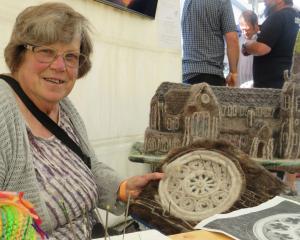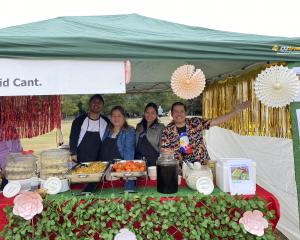
After decades of running a commercial farm alongside the school, board of trustees chair Simon Green is keen to see the whenua (land) used across as many curriculum areas as possible.
‘‘The commitment from the board is the land will not be sold. Buildings and residential areas come and go, but the land will remain here as a space for learning.’’
The school’s head of science, David Newsham-West, took a break from classroom duties last year to review the 20 hectare farm and explore future opportunities.
‘‘My key objective was, we can’t lose the whenua, but it needs to be a resource for the whole school.
‘‘Schools which have farms usually run them as a commercial entity to make an income, or it can become an educational resource, but that costs money.
‘‘So it is a delicate balance.’’
The school has pulled together a steering group comprising representatives from the school, the board, Federated Farmers, Lincoln University, Ministry for Primary Industries, the Waimakariri District Council, ComCol and a community member with Ngāi Tūāhuriri connections.
The New Zealand Sheep Breeders Association has provided 60 Corriedale / Romney-cross ewes from its genetics programme to ensure some traditional agriculture is retained.
Local couple Phil and Kay Worthington have provided some Lowline Angus cattle for the farm.
Partnerships have been forged with various organisations to offer new opportunities, including the Waimakariri Biodiversity Trust and Predator Free Waimakariri.
Predator traps have been built by students, who are now monitoring the pests.

The arts faculty is planning to grow harakeke groves as part of a regenerative project, producing materials for flax weaving to support Ngā Toi (Māori art).
The social science faculty is looking to create a native pathway, while health and PE is looking to create a rogaine and orienteering course and a mountain bike trail.
The school’s guidance counsellors are also looking at an equine therapy initiative in conjunction with ComCol North Canterbury’s equine studies programme.
Quorum Sense recently visited the school and is keen to get young people involved in role modelling regenerative agriculture for small farms and lifestyle blocks.
Another option is installing solar panels to demonstrate how solar farms can work alongside livestock.
'‘We’re looking at sustainability and the arts, and these are just two of the limitless possibilities we have to enhance our curriculum,’’ Mr Newsham-West said.
‘‘The opportunities are so much broader than a farm.’’
The project is entirely board-funded, which includes funds from the sale of 20 hectares of the school farm, after it was rezoned for housing nearly 20 years ago.
By David Hill, Local Democracy Reporter
■ Mr Green and Mr Newsham-West will be hosting an evening for school whānau on Wednesday, May 1, at 6pm to share ideas about how to make the most of the whenua (land) and hear from the community about how best to use the land to support learning.
■ LDR is local body journalism co-funded by RNZ and NZ On Air.













